Androgenetic Alopecia: Identification Of Four Genetic Risk Loci And Evidence For The Contribution Of WNT Signaling To Its Etiology
June 2013
in “Journal of Investigative Dermatology”

TLDR Four genetic risk spots found for hair loss, with WNT signaling involved and a link to curly hair.
This study identified four genetic risk loci for androgenetic alopecia (AGA) and provided evidence for the contribution of WNT signaling to its etiology. The strongest association was observed for rs7349332 on chr2q35, located intronically in WNT10A. The study also found an unexpected link between AGA and curly hair, which may specifically involve the WNT signaling pathway. The researchers suggest that these findings provide insight into the genetic basis of AGA and suggest potential therapeutic targets.
View this study on jidonline.org →
Cited in this study
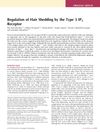
research Regulation of Hair Shedding by the Type 3 IP3 Receptor
The type 3 IP3 receptor is important for controlling hair loss and growth.

research Six Novel Susceptibility Loci for Early-Onset Androgenetic Alopecia and Their Unexpected Association with Common Diseases
Six new genetic regions linked to early hair loss also connect to Parkinson's disease and prostate cancer, possibly leading to new treatments.
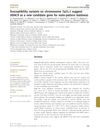
research Susceptibility variants on chromosome 7p21.1 suggest HDAC9 as a new candidate gene for male-pattern baldness
A gene called HDAC9 might be a new factor in male-pattern baldness.

research Fine mapping of the human AR/EDA2R locus in androgenetic alopecia
Genetic marker rs12558842 strongly linked to male hair loss.
research Common Variants in the Trichohyalin Gene Are Associated with Straight Hair in Europeans
Common variants in the Trichohyalin gene are linked to straight hair in Europeans.
research WNT10A Mutations Are a Frequent Cause of a Broad Spectrum of Ectodermal Dysplasias with Sex-Biased Manifestation Pattern in Heterozygotes
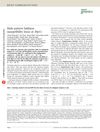
research Male-pattern baldness susceptibility locus at 20p11
Researchers found a new gene area linked to male-pattern baldness, which, along with another gene, significantly increases the risk of hair loss in men.

research EDA2R Is Associated with Androgenetic Alopecia
EDA2R gene linked to hair loss.

research Genome-wide Scan and Fine-Mapping Linkage Study of Androgenetic Alopecia Reveals a Locus on Chromosome 3q26
Hair loss gene found on chromosome 3q26.
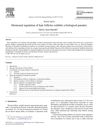
research Hormonal regulation of hair follicles exhibits a biological paradox
Androgens can both stimulate and cause hair loss, and understanding their effects is key to treating hair disorders.
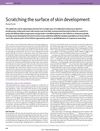
research Scratching the surface of skin development
The document concludes that skin stem cells are important for hair growth and wound healing, and could be used in regenerative medicine.

research Genetic Variation in the Human Androgen Receptor Gene Is the Major Determinant of Common Early-Onset Androgenetic Alopecia
Genetic variation in the androgen receptor gene mainly causes early-onset hair loss, with maternal inheritance playing a key role.

research The E211 G>A Androgen Receptor Polymorphism Is Associated with a Decreased Risk of Metastatic Prostate Cancer and Androgenetic Alopecia
E211 G>A gene linked to lower risk of severe prostate cancer and hair loss.
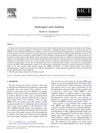
research Androgens and alopecia
Male hormones, particularly DHT, are linked to male pattern hair loss, and treatments like finasteride can help, but they don't work for postmenopausal women's hair loss, which may have different causes.

research Androgenetic alopecia: pathogenesis and potential for therapy
Hair loss needs more research for better treatments.

research The genetics of androgenetic alopecia
Genes and hormones cause hair loss, with four genes contributing equally.
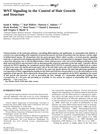
research WNT Signaling in the Control of Hair Growth and Structure
The research shows that a gene called Wnt3 affects hair growth and structure, causing short hair and balding when overactive.

research Diagnostic and predictive value of horizontal sections of scalp biopsy specimens in male pattern androgenetic alopecia
Horizontal scalp biopsy sections effectively diagnose and predict MPAA, with follicular density and inflammation impacting hair regrowth.